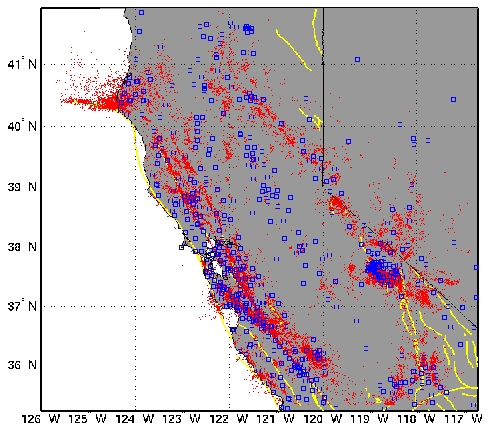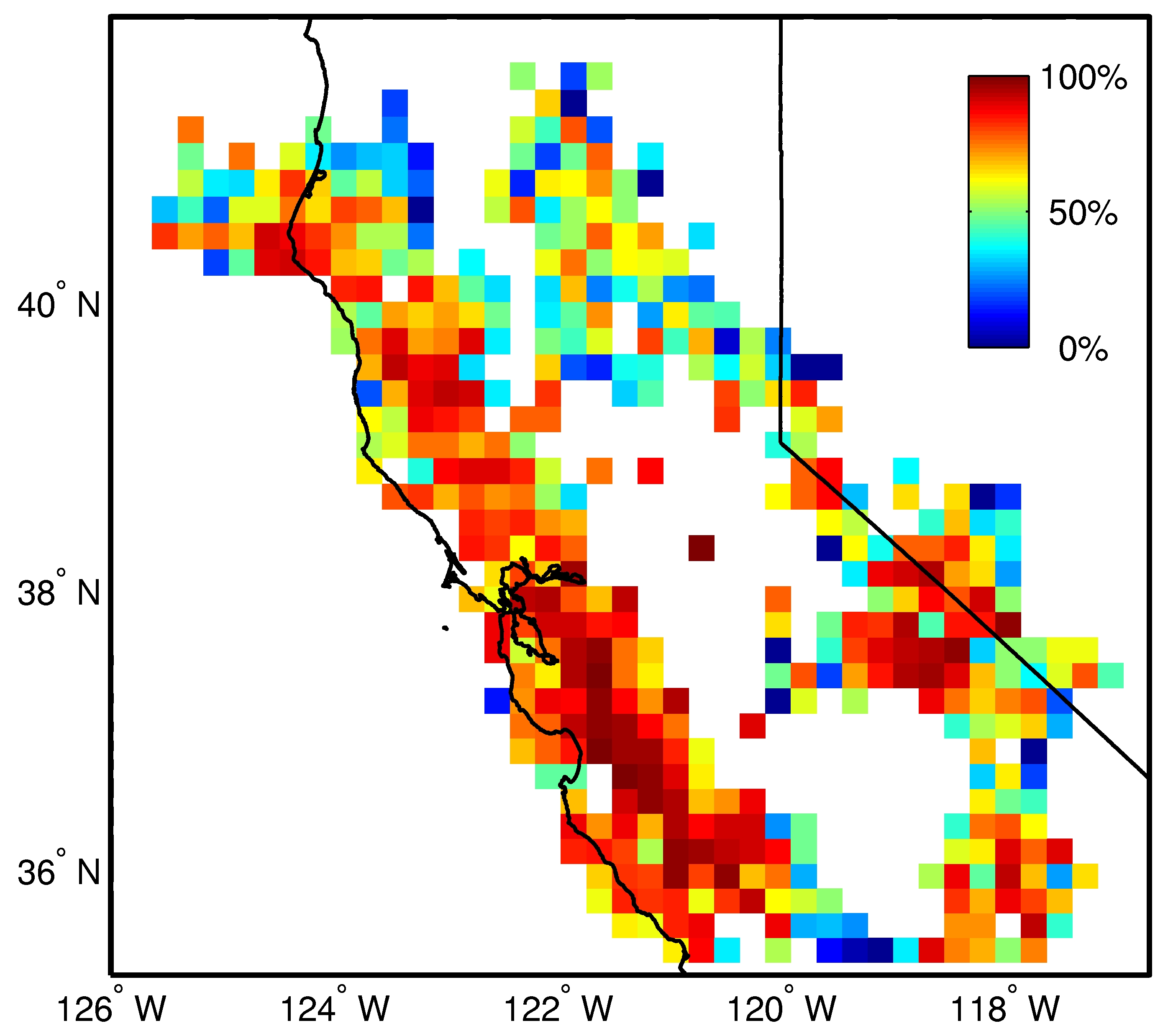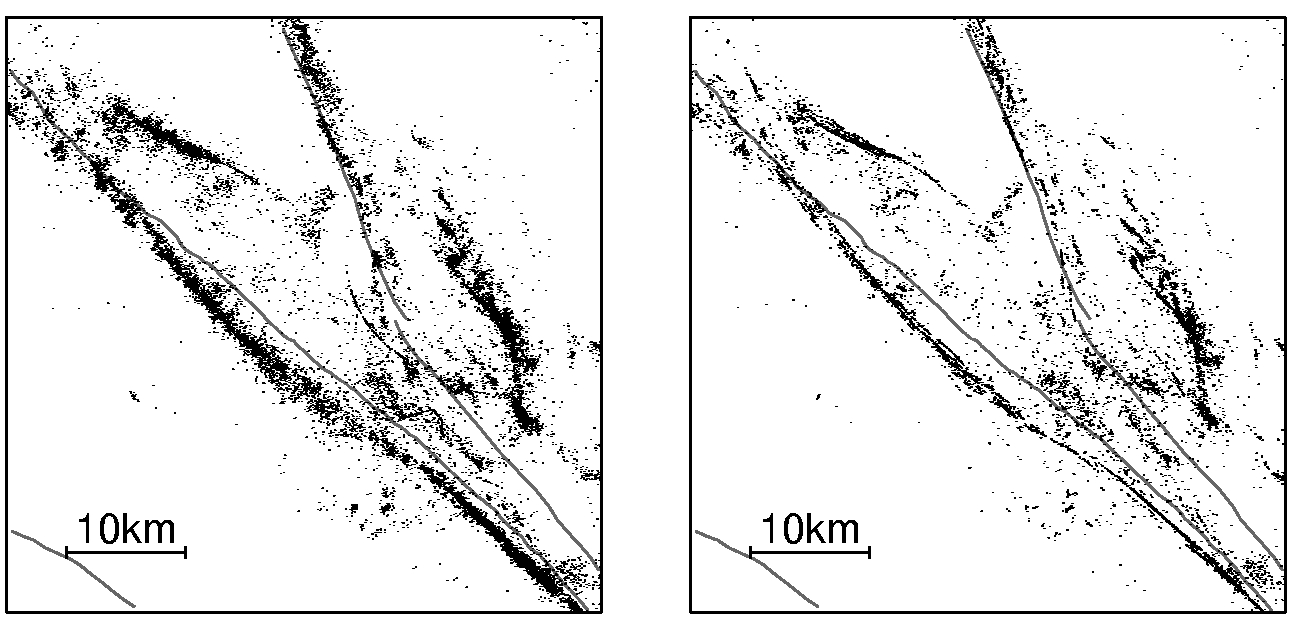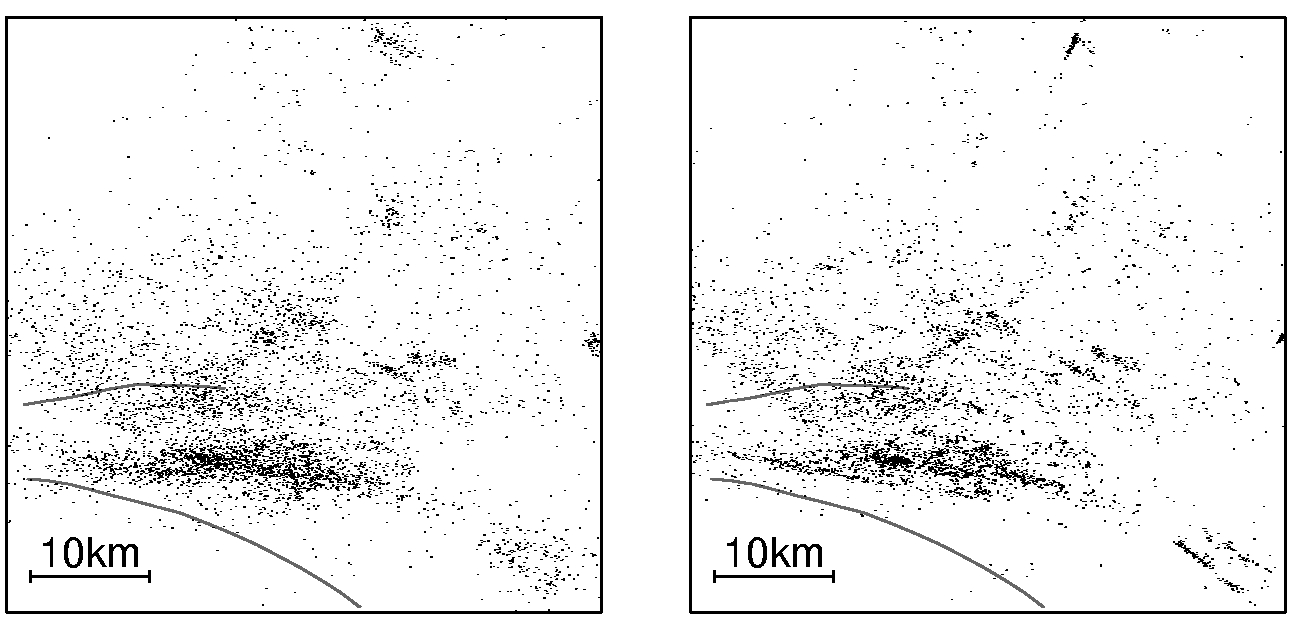Data and Methods
This catalog is based on a simultaneous re-analysis of two decades (1984-2003) of the digital seismic archive of Northern California. Waveform cross correlation (CC) and double-difference (DD) methods are used to improve the resolution in hypocenter locations in the existing earthquake catalog generated at the Northern California Seismic Network (NCSN) by up to three orders of magnitude (see Waldhauser and Schaff, 2008, for details). We used a combination of ~3 billion CC differential times measured from all correlated pairs of events that are separated by less than 5 km (Schaff and Waldhauser, 2005) and ~7 million P-wave arrival time picks listed in the NCSN bulletin. The data was inverted for precise relative locations of 311,273 events using the DD algorithm (Waldhauser and Ellsworth, 2000).





